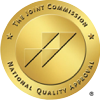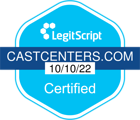The Cast Alignment Model
- Home
- Blog
- Uncategorized
- The Cast Alignment Model

By Patrick O’Neil
CAST Centers is an outpatient program that offers a variety of treatment options. Outpatient treatment can be defined as a rehabilitation modality where people are treated on a “part-time” basis. The advantage of outpatient treatment is that clients can live at home, continue working, or taking care of their families, and not totally disrupt their lives and/or careers.
In addition to individual therapy sessions clients attend group therapy, which “provides the opportunity for small groups of clients to meet regularly in a safe, comfortable space where sharing, interacting, and learning is facilitated by a clinician.” According to The Center for Substance Abuse Treatment, “The natural propensity of human beings to congregate makes group therapy a powerful therapeutic tool for treating substance abuse, one that is as helpful as individual therapy, and sometimes more successful.”
There are many treatment centers that offer outpatient treatment, but what sets CAST Centers above the rest is the CAST Alignment Model, or CAM for short. CAM is a curriculum-structured process that helps clients with addiction or mental health or dual diagnosis. CAM “is the basis for the integrated activities of alignment, support, and treatment that are components of the CAST program” in order to help steer clients into recovery and toward purposeful living. The CAM program is an intricate enmeshing of the traditional interpersonal process group that most treatment centers utilize with the newer evidence based treatment approaches of psycho-education, skill development, cognitive–behavioral problem-solving, psychodrama, dialectical behavior therapy, and the building of community support.
According to a study on the effectiveness of group therapy conducted by the Substance Abuse and Mental Health Services Administration, “Each of the [above] models has something unique to offer to certain populations; and in the hands of a skilled leader, each can provide powerful therapeutic experiences for group members. A model, however, has to be matched with the needs of the particular population being treated; the goals of a particular group’s treatment also are an important determinant of the model that is chosen.” With CAM all therapeutic models are incorporated into the treatment process. There is no need to “choose” as every recovery element has been included and shaped toward the clients’ needs. And because CAM is all inclusive the methods used can treat mental health and substance abuse clients simultaneously in the same group setting.
“In my experience,” writes licensed clinical social worker Sean Grover, “few interventions dismantle depressive symptoms faster than group therapy. What makes group therapy so effective? Group therapy targets three leading causes of depression: isolation, unhealthy relationships, and negative self-talk. By uprooting these causes, group offers solutions that individual therapy or antidepressants can’t.” While The Center for Substance Abuse Treatment further states, “groups intrinsically have many rewarding benefits—such as reducing isolation and enabling members to witness the recovery of others—and these qualities draw clients into a culture of recovery. Another reason groups work so well is that they are suitable especially for treating problems that commonly accompany substance abuse, such as depression, isolation, and shame.”
Many clients suffer from dual diagnosis, which the American Addiction Centers outlines as, “Someone with substance abuse disorder (drugs or alcohol) and mental illness (depression, PTSD, anxiety, OCD, etc.), the diagnosis is called a co-occurring disorder. [And] though the symptoms of one disorder may predate the other, both disorders tend to exacerbate one another, making it impossible to extricate the symptoms caused by one disorder from the other.” Many of these clients have been struggling alone and in isolation and have difficulty seeing a way out. By connecting with others in the CAM group setting they will find a new way to gain hope while working toward a healthier sense of well-being.
CAM group members are encouraged to interact with each other. Their feedback allows for constructive suggestions, insights, and a sense of community and support helps to develop and encourage the healing process. “Within this specialized small group process,” writes mental health specialist Deborah Reeves, “the vitality of an established group may lend to the potential of opening up channels of communication that can have the shared capacity of being unique and profound. Stability, unification, and a positive group climate are all aspects of a healthy [group]. Such identifying aspects help in creating room for innovative and creative risk-taking within the group. Personal disclosure within the group is expected and agreed upon to be kept in strict confidence. For each individual, the rewards of creating a place that is their own can be a place that is very real and fully connected.”
The CAST treatment program is structured, but also flexible to accommodate the needs of individual clients. The duration of a client’s participation in the program can extend from a brief period of four weeks to a more extensive involvement of eight weeks, or longer. CAST Centers treatment professionals address client needs using the operational constructs that reflect the CAST Alignment Model precepts. The program’s arrangement and flow follow the CAM modules but are still flexible to be responsive to the needs and timing of the individual client’s readiness to start treatment.
If you or a loved one are in need of outpatient treatment, CAST Centers and the CAST Alignment Model are the best there is for helping those suffering from mental health and substance abuse.
References:
GET STARTED TODAY!
(323) 457-8208
CAST Centers is Proud to Celebrate Over 18 Years
Helping Individuals & Families
Programs
What We Treat
-
Substance Abuse
Insurance
Alumni
Contact Cast Centers
CAST Centers
630 N Doheny Drive
West Hollywood, CA 90069
(323) 457-8208
Email
Administration
632 N Doheny Drive
West Hollywood, CA 90069
(323) 457-8208
Email
Service Area
CAST Centers is licensed by the California State Department of Health Care Services. DHCS Certification for Intensive Outpatient and Outpatient Services.
License Number: 190936BP.
Expiration Date: 8/31/2025.
Copyright © 2022 CAST Centers. All rights reserved.
Privacy Policy | HIPAA | Terms of Use | Site Map


